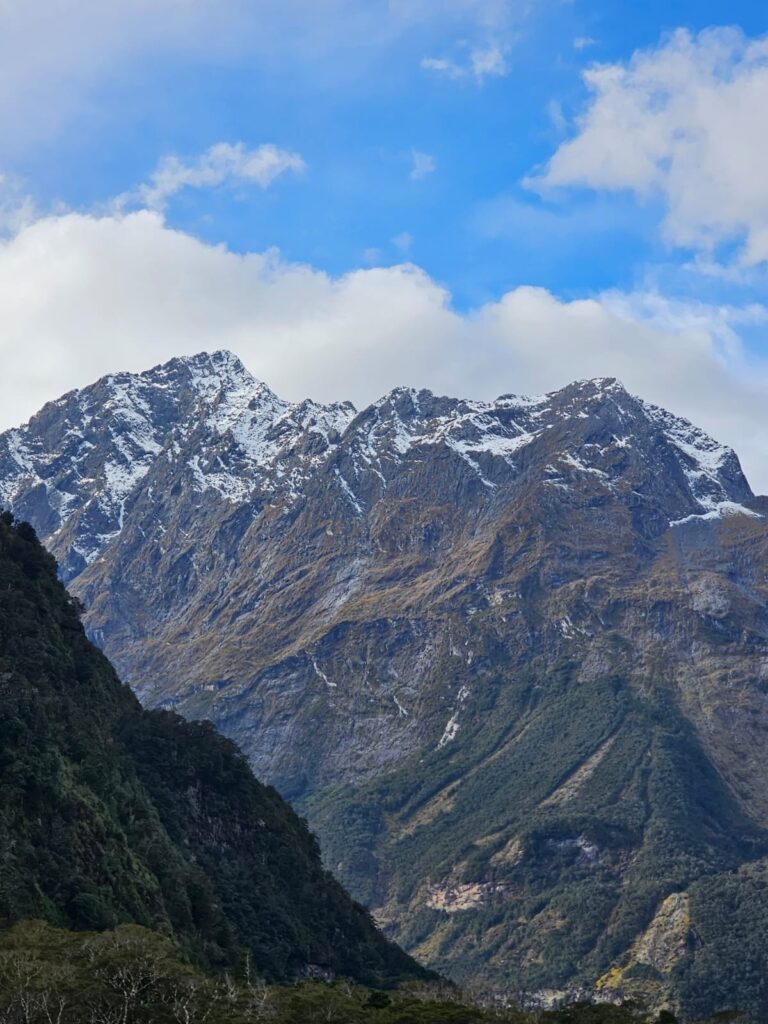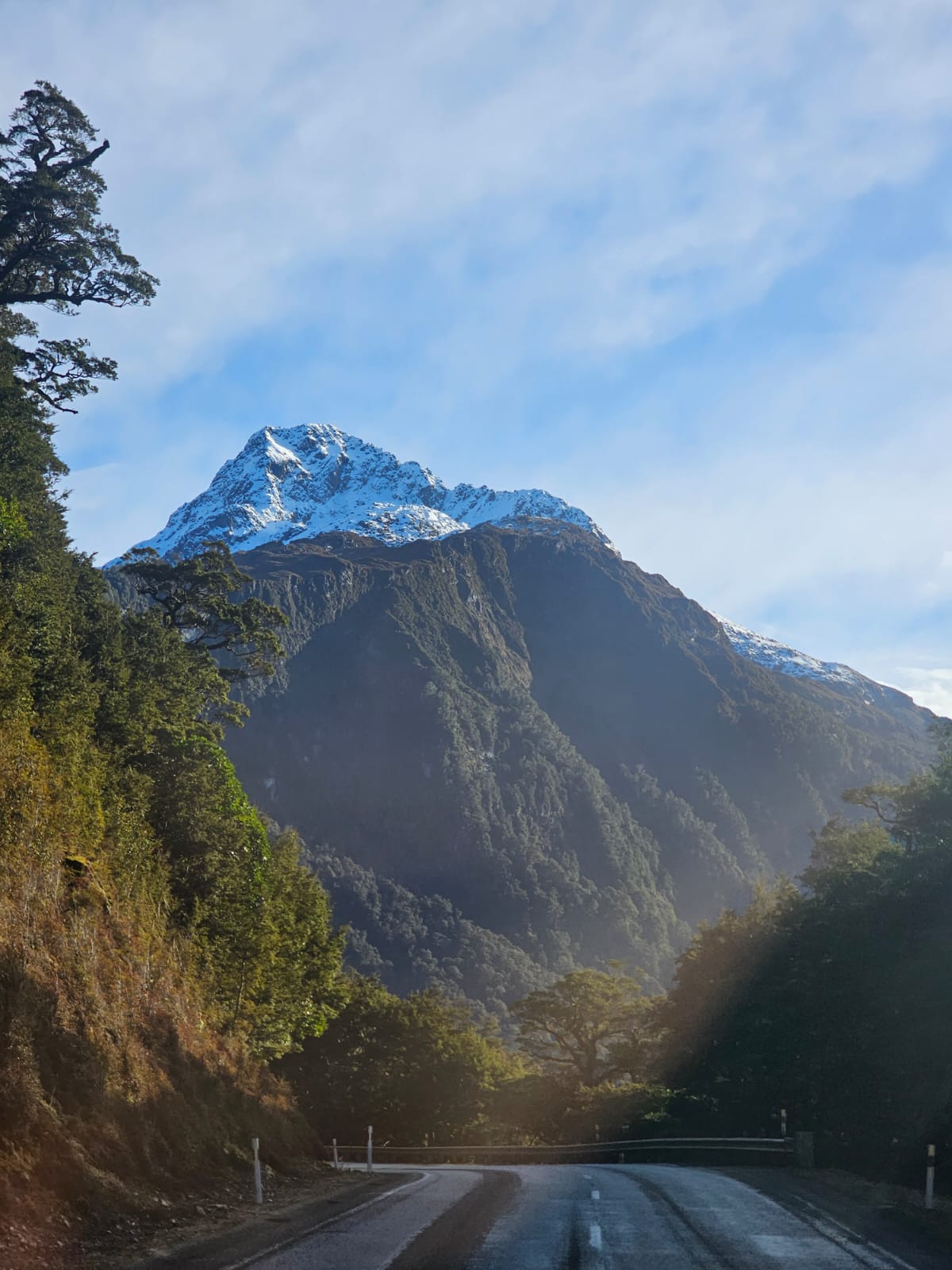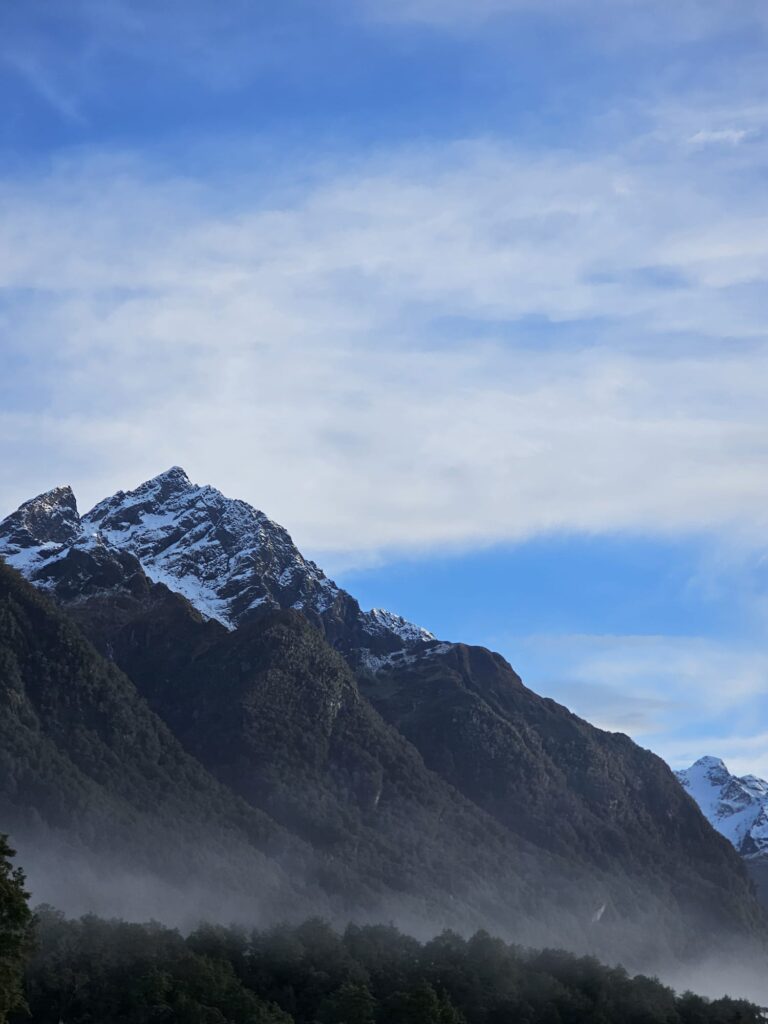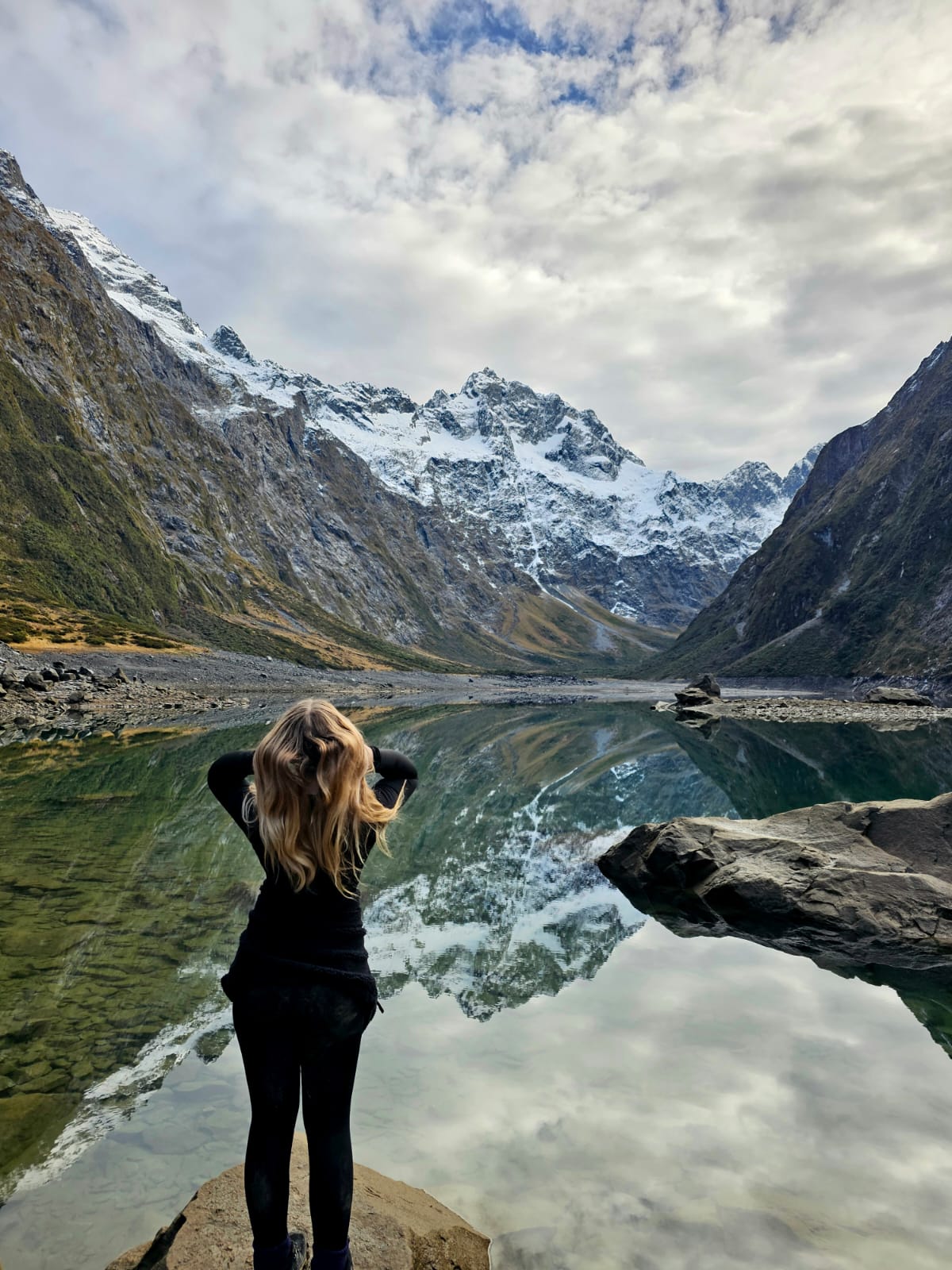Before you enter the Homer Tunnel into the territory of Milford Sound, you must drive the Milford Road, the gateway not only to the famed sound but to the wider Fiordland National Park. The Milford Road is a chest full of treasures that should not be bypassed or hurried through on the route to Milford Sound. With countless campgrounds, viewpoints, and recreational sites, Fiordland National Park is, at the least, a full day’s itinerary. The drive itself is extended exponentially by the urge to pull over every 5 minutes when a new natural wonder comes into view. The road bisects at least half a dozen glacially carved valleys, with the Southern Alps to its east and further ranges to the west.
You first reach Eglinton Valley, characterised by the straight section of road surrounded by rolling, snow-capped peaks and wide-open grasslands that were once pastoral farmland. In the spring months, these panoramic fields are painted with wildflowers, including the New Zealand lupin. A short distance deeper into this valley, you reach Mirror Lakes. Here you find a viewing point named colloquially after its reflective projections of Mount Eglinton in a small tarn. On a clear day, the mountain vista is replicated beautifully on the water’s surface. We had the forethought to try our luck at golden hour and were treated to pinkish golden clouds joining this already stunning picture. The still tarn was an incredibly tranquil setting to enjoy the last of the day’s light.

As you venture further into the Fiordland, you will pass Lake Gunn. This beautiful alpine lake is just another jewel of the Fiordland National Park’s bedecked crown. Nestled on its southern shore is Cascade Creek campsite, which we have spent many a night at. This is shortly followed by Lake Fergus, a smaller but by no means less beautiful spring surrounded by native forest.
Continuing along the Milford road, you will reach a small stone alcove named Pop’s View, which looks out into Hollyford Valley. This panorama of craggy mountains and lush forest as far as the eye can see really encapsulates how vast and untouched this area is. We visited the viewpoint during the morning’s golden hour and watched as the sun highlighted sections of the mountain face a stunning amber.

Fiordland National Park is home to my favourite hike in New Zealand. There is no forewarning approach in this hike; you walk through native bush, blind to your destination. This only adds to the thrill of having one climactic moment seeing Lake Marian for the first time. As you turn the final bend and enter the clearing, you enter a pocket of natural beauty that is unrivalled. It is how I read and imagined the passage into the secret garden, when you turn a corner and feel that you have entered a new plane of existence. The fact that you are surrounded by native forest at your back and valley walls to your front really fosters the feeling of entering a sheltered and secret oasis.
I can’t quite articulate what is so beautiful about Lake Marian; it is not an entirely vast alpine lake, nor is the mountain at its back unfathomably large. Its composition perhaps simply tickles the artistic part of my brain, with steep valley walls leading the eye down into the lake where the mountain’s mirror image is perfectly reflected. Perhaps also it is that you can hike right up to the lake’s edge, so the reflection manifests as an incredibly detailed and large replication that spans the surface of the whole lake. Perhaps it is also the sheltered nature of the valley that imbues such a sense of remoteness, like it is a beautiful place reserved solely for you. But nonetheless, Lake Marian is my favourite place in New Zealand.

Another nearby great hike is a short detour from the Routeburn Track, named Key Summit. This hike is a relatively short ascent via switchbacks until you reach a plateau. Boardwalks circle around the fragile area and take you to a small viewing platform that overlooks Lake Marian from above. This view, however, is from a distant, obstructed angle and massively undersells the lake’s true potential. Without fixating on spotting Lake Marian, the viewpoint does, however, present a beautiful panoramic vista of mountains, and the hike is worth doing with this in mind. You will also happen upon a small tarn that has its own reflective appeal.
All these areas mentioned are merely in the northernmost periphery of Fiordland National Park, which is the most visited. To the south there are the small townships of Manapouri and Te Anau. A small number of day hikes can be accessed via water taxi in this area if you desire to walk the path less treaded on. Another more popular option is the Kepler Track, part of New Zealand’s great walk system. Beyond this, several touring companies provide access to Doubtful Sound through a boat ride over West Arm and a shuttle bus that crosses the Wilmot Pass. Doubtful Sound is the option taken by those looking for an uncrowded encounter with New Zealand’s fiords. Due to the difficulty of access, it is significantly less visited than its sister Milford Sound.

Fiordland National Park actually affords 14 fiords and covers over 3 million acres of land. It is a huge landmass that cartographically monopolises a noticeable corner of the South Island. But as you can see on a map, this entire area is populated by mountains and deep fiords. Beyond its northernmost and easternmost edges, it is completely uninhabited. Unless you are prepared to venture into endless wilderness, it is an area with very little human footfall at all. But the existence of such areas, where nature and native species can thrive undisturbed, is a feat that is welcomed by me and all of New Zealand’s conservationists. As hugely as I have enjoyed witnessing the Fiordland’s beauty, not all areas must be for human eyes.








Comments
One response to “Fiordland National Park”
Emily – thank you for your blog. The wonderful descriptions of travels and stunning photographs.